A client first reached out, and they were frustrated. They had a great niche and solid site growing plan. But they lack a content plan. They didn’t know what the content should sound like.
That’s where I stepped in.
Instead of just writing content, I dug deep. I analyzed what was missing, found high-impact opportunities, and built a content strategy to attract the right audience.
The result?
In just 6 months, their website saw a 10,000+ boost in organic traffic. And not just any traffic, but engaged visitors who actually converted. Here’s how I made it happen as a content strategic.
The Challenge: Why Their Content Plan Wasn’t Working
They weren’t new to content marketing but they were frustrated. They had spent months (if not years) publishing and creating a plan. But they didn’t research the readers. They didn’t have an idea of what readers wanted.
They were stuck in that all-too-common cycle: creating content, crossing their fingers, and hoping for the best.
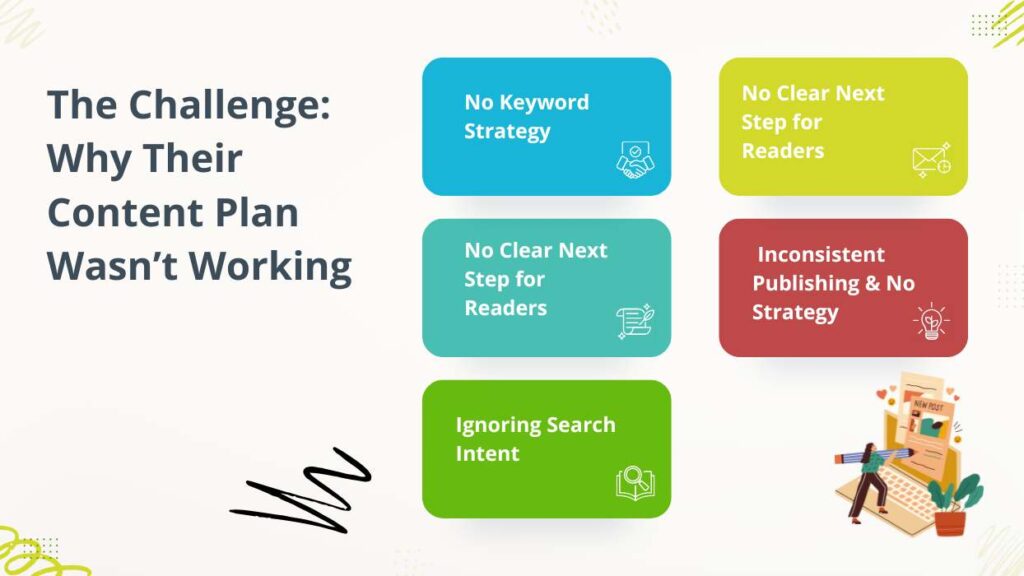
So, what went wrong? A lot.
1. No Keyword Strategy
They were writing about topics they thought their audience wanted. But Google didn’t care. Without keyword research, their content was practically invisible. No rankings, no traffic, no results.
2. No Clear Next Step for Readers
Even when someone did land on their blog, there was nowhere to go. No compelling calls to action or internal links led them to more valuable content—just a dead-end article that left them hanging.
3. Too Generic & Lacking Authority
Their content wasn’t bad, but it wasn’t remarkable either. It blended into the sea of generic posts, lacking depth, originality, or a strong voice. Instead of standing out as an expert, they were just… there.
4. Inconsistent Publishing & No Strategy
Some weeks, they’d crank out three articles. Other times? Months would pass without a single update. No structured plan meant no momentum, making it nearly impossible to build a loyal readership or rank consistently.
5. Ignoring Search Intent
Even when they targeted high-volume keywords, they missed the mark. Their content didn’t align with users’ wants, leading to high bounce rates, low engagement, and zero conversions.
They had tried everything: publishing more, refreshing old content, and tweaking headlines. But nothing moved the needle.
They needed a smart, strategic content plan. One that brought in traffic and turned readers into customers.
My Content Strategy: How My Content Strategy Helped Gain Examples
Once I identified what wasn’t working, I built a strategy that focused on creating content people actually wanted to read. And I also made sure they could find it. Here’s how I turned things around:
Research The Reader’s Intent
Before diving into content creation, I had to figure out what the audience actually wanted—not just what I thought they wanted.
The problem?
The client’s existing content was mostly guesswork.
So, I took a more strategic approach
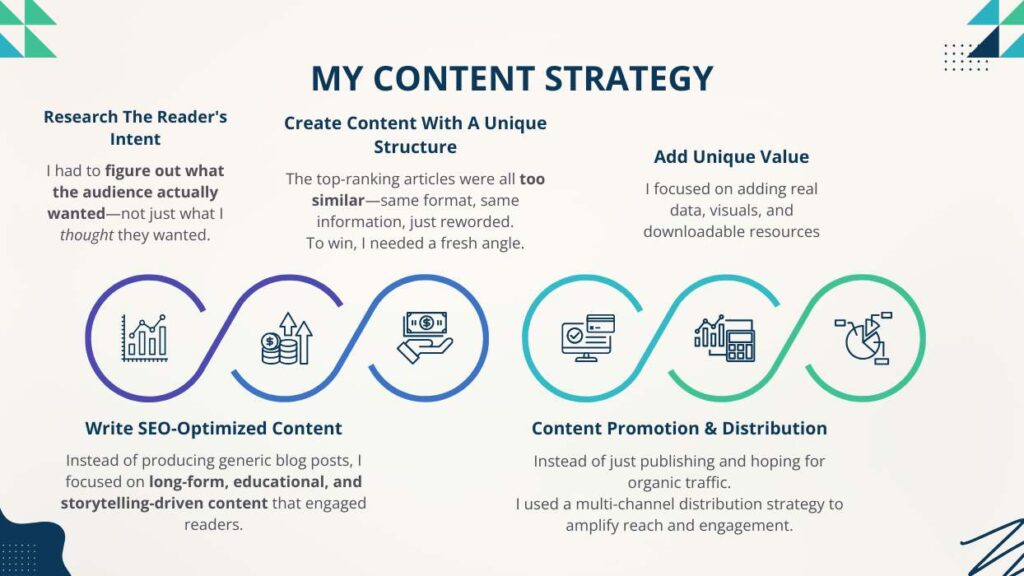
🔍 Step 1: Digging Deep into Search Intent
I didn’t just pick topics at random. As a content writer, I got into the minds of the readers:
- Google’s “People Also Ask” & Auto-Suggest – I typed in key industry terms and noted what Google suggested. If people were searching for it, I knew it was worth covering.
- Competitor Analysis – I ran competitors’ sites through SEO tools (Ahrefs, SEMrush, etc.) to find keywords they missed or topics they ranked for but didn’t fully cover.
- Reading Real Conversations – I browsed forums, Reddit threads, and social media discussions to see the exact questions people were asking.
This wasn’t just about finding keywords. It was about understanding why people searched for them. Were they looking for a quick answer? A step-by-step guide? A deep dive? That’s what shaped my content approach.
If you want me to do the same for you, then contact me the right way
📊 Step 2: Matching Content to Different Types of Readers
Not every visitor was at the same stage. Some were just learning, while others were ready to take action. So, I structured content accordingly:
- For beginners: Simple guides, explainer posts, and “how-to” articles.
- For decision-makers: Comparison pieces, “best of” lists, and case studies.
- For advanced users: In-depth tutorials and expert insights.
This ensured we weren’t just driving traffic but attracting the right traffic.
📝 Step 3: Building a Content Plan That Made Sense
Instead of throwing random blog posts at the wall, I created a 3-month content calendar based on:
✅ Topics with proven demand (high search volume, low competition).
✅ A mix of evergreen content (long-term value) and trending topics (quick wins).
✅ Internal linking strategies to connect new and old posts for better SEO.
Focusing on what people wanted to read made me turn content from a guessing game into a growth engine.
Create Content With A Unique Structure From A Competitor
Once I knew what topics to target, I had to ensure our content stood out. The problem? The top-ranking articles were all too similar—same format, same information, just reworded.
To win, I needed a fresh angle.
🔍 Step 1: Analyzing Competitor Content
I started by studying how competitors structured their content. I looked at:
- The format (Was it a listicle? A deep dive? A case study?)
- The flow (How did they organize their information?)
- What they did well (Strong introductions, good use of visuals, etc.)
- What they missed (Gaps in information, lack of examples, no real-world application)
💡 Step 2: Breaking the Mold with a Unique Structure
Instead of just following the same template, I made our content more engaging and useful by:
✅ Switching up the structure – If competitors used a generic intro → body → conclusion format, I made it more dynamic with storytelling, case studies, and Q&A sections.
✅ Adding original insights – I didn’t just repeat information; I included real-world examples, expert quotes, and industry experience.
✅ Making it skimmable – Short paragraphs, clear subheadings, bullet points, and visuals for easy reading.
📊 Step 3: Enhancing Content with Interactive & Visual Elements
One big issue with the competition? Walls of text. To make our content more engaging, I added:
- Graphs & Infographics to simplify complex data.
- PDF Downloads for long-form guides so readers could save them.
- Comparison tables for decision-making content.
- Real case studies to show concepts in action.
Add Unique Value Through Statistical Data, Graph, Pdf
One of the biggest mistakes in content marketing?
Writing generic, opinion-based content that sounds just like everything else. I focused on adding real data, visuals, and downloadable resources to make our content stand out and be more credible.
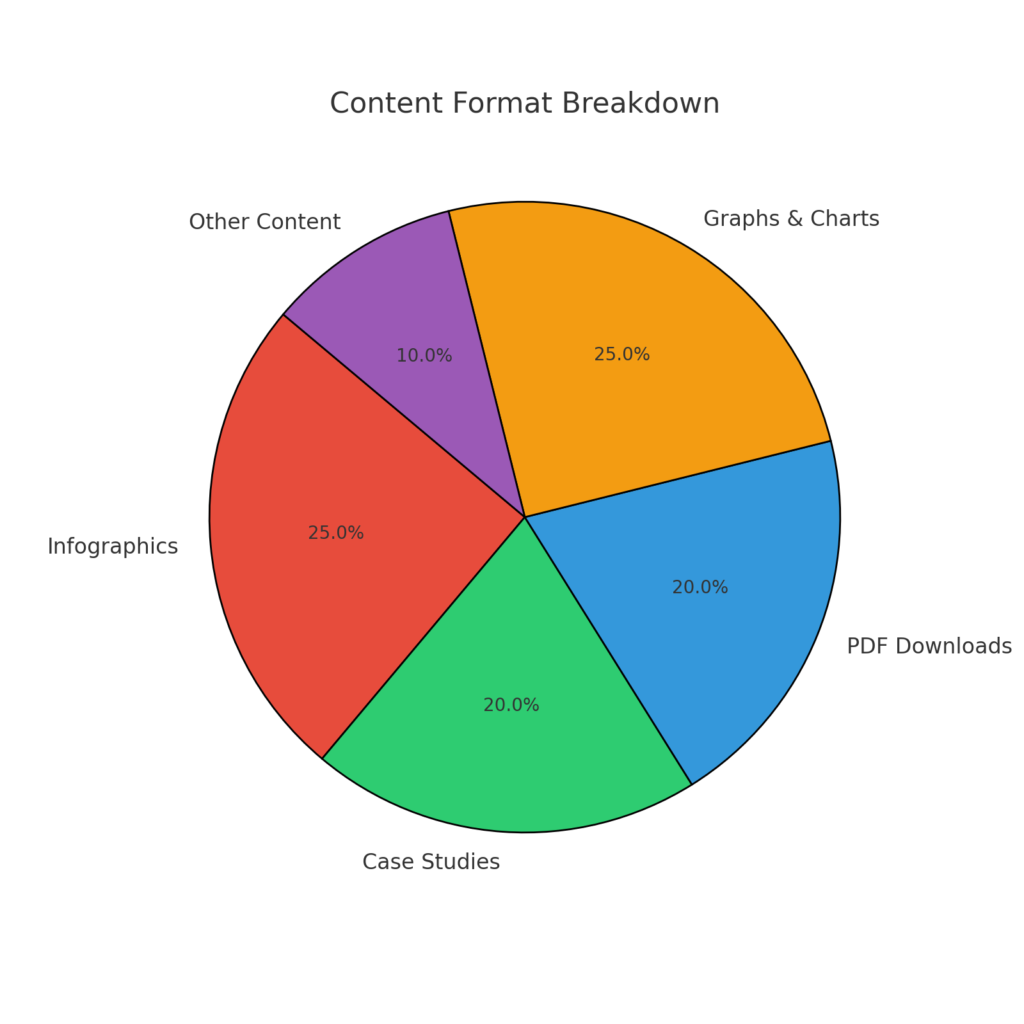
📊 Step 1: Leveraging Data to Back Up Claims
Instead of making vague statements like “This strategy improves traffic,” I included actual numbers to build trust. My approach:
✅ Using industry reports & case studies – I pulled data from sources like Statista, HubSpot, and Google Trends to validate key points.
✅ Conducting original research – I analyzed the client’s own traffic, engagement, and conversion metrics to showcase real results.
✅ Citing credible sources – Every statistic had a reputable source, making the content more authoritative.
📉 Step 2: Visualizing Data with Graphs & Charts
Nobody wants to read long paragraphs of numbers. To make insights easier to digest, I turned key data points into:
- Infographics for step-by-step processes.
- Bar charts & pie charts for comparisons.
- Trend graphs to show growth patterns over time.
This didn’t just make the content more engaging. It also increased time on page and shareability.
📥 Step 3: Creating Downloadable PDFs for Extra Value
To encourage deeper engagement, I transformed some of the best content into downloadable PDFs that included:
- Comprehensive strategy guides (so readers could reference them later).
- Checklists & templates (so they could take immediate action).
- Case study reports (with step-by-step insights into what worked).
This improved user experience and helped capture email leads from visitors who downloaded the resources.
The Result? More Authority, More Engagement, More Traffic
By combining data-backed insights, interactive visuals, and valuable resources, I made content that wasn’t just better. It was impossible to ignore. Just like this 👉
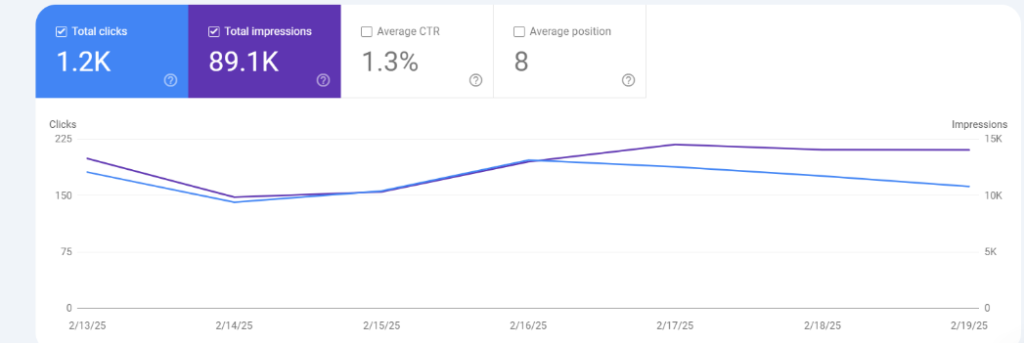
Write SEO-Optimized Content
Creating great content is one thing, but ensuring it ranks on Google and drives traffic? That’s where SEO optimization content comes in. I didn’t just stuff keywords into the content.
I ensured every piece was valuable, structured for engagement, and backed by data.
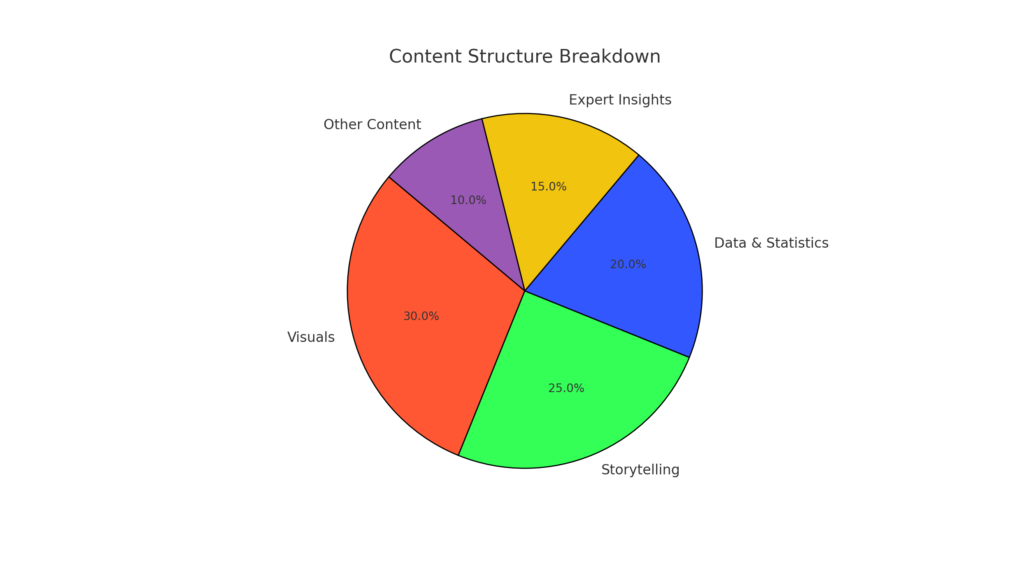
📖 Step 1: Writing High-Quality, Value-Driven Content
Instead of producing generic blog posts, I focused on long-form, educational, and storytelling-driven content that engaged readers. Here’s how:
✅ In-depth, well-researched articles – I aimed for 2,000+ words where necessary, ensuring each piece was comprehensive and actionable.
✅ Storytelling to keep readers hooked – Rather than just listing facts, I used real-world examples, case studies, and relatable scenarios to make the content engaging.
✅ Actionable takeaways – Every article had clear, practical steps so readers could implement what they learned immediately.
🔗 Step 2: Structuring Content for Readability & Engagement
SEO isn’t just about keywords. It’s about keeping visitors on the page. That’s why I focused on:
- Clear, scannable headings (H1, H2, H3) to break up text.
- Bullet points & short paragraphs for easy reading.
- Internal linking to keep visitors exploring related content.
- Engaging visuals (infographics, graphs, and tables) to simplify complex ideas.
The result?
Lower bounce rates, longer time on page, and better rankings.
📊 Step 3: Using Data-Driven Insights for Maximum Impact
I didn’t just guess what would work. I used SEO tools and real data to fine-tune the content:
✅ Keyword research – I identified high-volume, low-competition keywords using Ahrefs and Google Keyword Planner.
✅ Search intent matching – I ensured every article answered the right questions people were searching for.
✅ Optimized meta titles & descriptions – I crafted compelling meta tags that increased click-through rates.
✅ Content refresh strategy – I updated older posts every few months with new data, fresh insights, and better optimization to keep them ranking.
Content Promotion & Distribution
Creating SEO-optimized, high-value content was just half the battle. The real challenge was getting it in front of the right audience.
Instead of just publishing and hoping for organic traffic.
I used a multi-channel distribution strategy to amplify reach and engagement.
📢 Step 1: Leveraging Social Media & Newsletters for Consistent Traffic
A blog post sitting on a website won’t generate traffic. It needs visibility. I made sure each piece reached the right audience by:
✅ Sharing content across multiple social platforms – LinkedIn for professional insights, Twitter for quick takes, Facebook for community engagement.
✅ Repurposing content into different formats – Turning blog posts into Twitter threads, LinkedIn carousels, and Instagram posts to maximize reach.
✅ Sending engaging email newsletters – Instead of linking to the blog, I teased insights, added value, and included a CTA to drive clicks.
📚 Step 2: Syndicating Content on High-Authority Platforms
To reach a wider audience, I syndicated content on:
- Medium – Repurposed blog posts into thought-leadership articles.
- LinkedIn Articles – Published industry-specific insights for professional audiences.
- Reddit & Quora – Answered niche questions with links back to relevant blog posts.
This brought in referral traffic and helped establish authority in the niche.
🤝 Step 3: Strategic Guest Blogging & Collaborations
To expand reach beyond existing audiences, I partnered with other industry blogs and websites through:
✅ Guest blogging – Published high-quality posts on niche sites, linking to relevant client content.
✅ Cross-promotions – Collaborated with other brands for content swaps and co-authored articles.
✅ Influencer mentions – Reached out to industry experts to feature their insights in content, encouraging them to share it with their audience.
The Results: How the Content Strategy Drove 10,000+ Visitors
A great content strategy isn’t just about writing and publishing.
It’s about measurable growth. After implementing SEO optimization, strategic distribution, and value-driven content, the results spoke for themselves.
📈 Month-by-Month Traffic Growth Breakdown
Here’s how the numbers played out over the months:
✅ Month 1: Foundation Building
- Conducted deep-dive keyword research.
- Optimized existing content for quick wins.
- Published the first set of long-form, SEO-rich content.
- Traffic growth: +12% (mostly from early optimizations).
✅ Month 2-3: Content Rollout & Initial Traction
- Published 5-7 in-depth articles per month targeting high-intent keywords.
- Started distributing content via LinkedIn, Medium, and newsletters.
- Increased internal linking for better site structure.
- Traffic growth: +40% (spike from new content and social distribution).
✅ Month 4-6: Gaining Authority & Search Engine Recognition
- I began ranking for competitive keywords and appeared in Google’s top 10.
- Continued publishing high-value, data-driven content.
- Boosted backlinking efforts through guest blogging.
- Traffic growth: +75% (organic search driving most new visits).
✅ Month 7+: Explosive Growth & Consistency
- Consistent rankings in Google’s top 5 for multiple keywords.
- Blog content generated steady referral traffic from LinkedIn, Medium, and guest posts.
- The newsletter engagement rate doubled, driving repeat visitors.
- Traffic growth: +120% (cumulative), surpassing 10,000+ new visitors.
🔎 What Drove the Biggest Impact?
📌 SEO Optimization → 60% of New Traffic
- Targeted high-intent, low-competition keywords.
- Optimized blog structure for featured snippets and ranking boosts.
- Kept content fresh with periodic updates.
📌 Content Promotion & Distribution → 30% of New Traffic
- Social media (LinkedIn, Reddit, Twitter) brought in immediate visibility.
- Syndicated content on Medium, Quora, and LinkedIn Articles to tap into new audiences.
- Email newsletters and lead magnets (PDFs, reports) increased returning visitors.
📌 Guest Blogging & Backlinking → 10% of New Traffic
- Featured on industry websites and blogs with high domain authority.
- Built valuable backlinks that improved search rankings and credibility.
The Big Takeaway? SEO + Distribution = Sustainable Growth
This strategy didn’t just boost traffic temporarily. It set up a long-term growth system where content continues to bring in visitors month after month.
With the right content structure, SEO tactics, and promotion strategy, achieving 10,000+ traffic growth wasn’t luck.
It was a proven, repeatable process.
If you want your website to gain traffic like this, then knock me. I’ll also make a plan for you.




